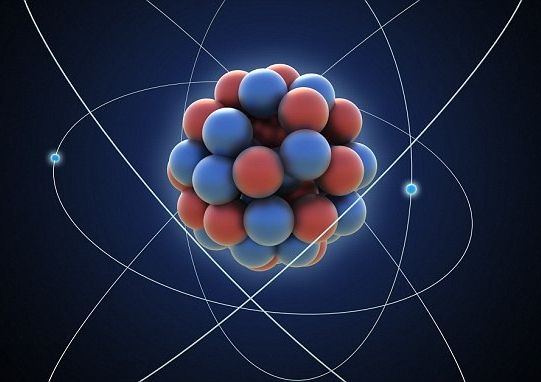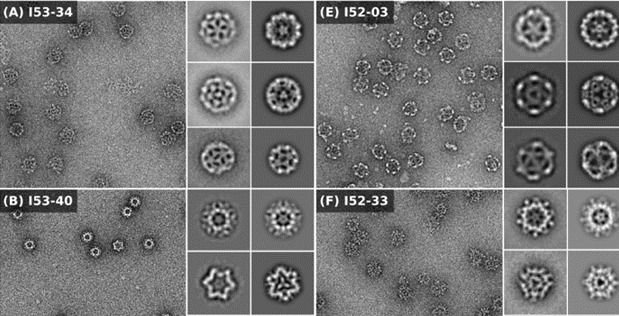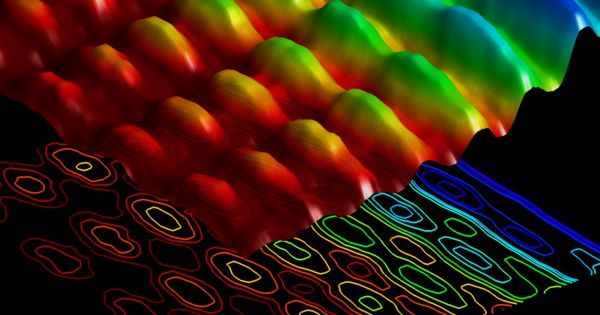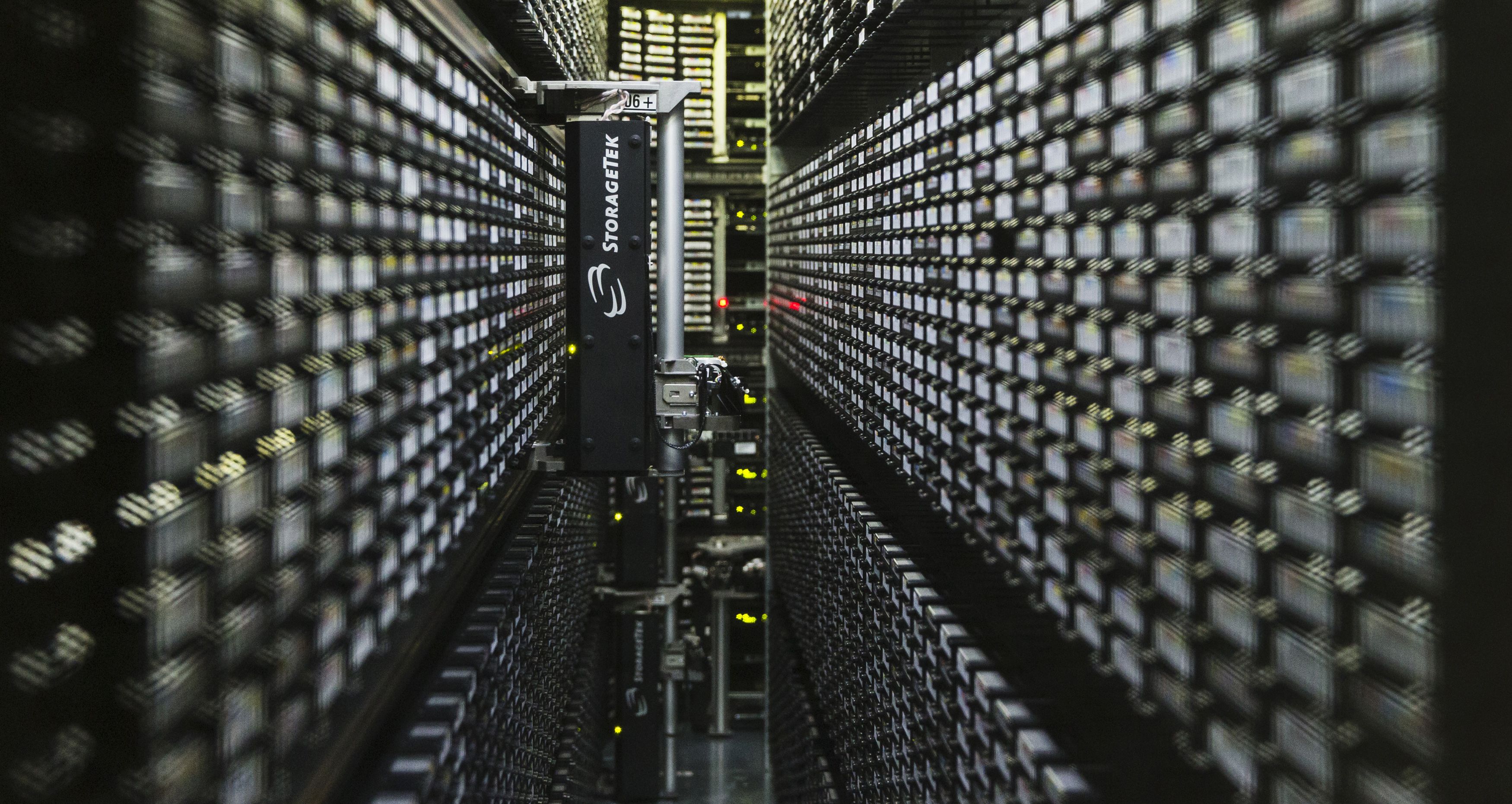Archive for the ‘particle physics’ category: Page 508
Jul 25, 2016
Biggest Little Self-Assembling Protein Nanostructures Created
Posted by Klaus Baldauf in categories: biotech/medical, genetics, nanotechnology, particle physics
A research team at the University of Washington has harnessed complex computational methods to design customized proteins that can self-assemble into 120-subunit “icosahedral” structures inside living cells—the biggest, self-booting, intracellular protein nanocages ever made. The breakthrough offers a potential solution to a pressing scientific challenge: how to safely and efficiently deliver to cells new and emerging biomedical treatments such as DNA vaccines and therapeutic interfering particles.
The work, funded by DARPA in a lead-up to the new INTERfering and Co-Evolving Prevention and Therapy (INTERCEPT) program, “opens the door to a new generation of genetically programmable protein-based molecular machines,” the researchers report in this week’s issue of the journal Science. The research paper is available here: http://ow.ly/LW8F302tOp3
Anyone familiar with the role-playing games Dungeons and Dragons and Munchkin need only picture the 20-sided die to understand what an organic, icosahedral cargo container looks like—symmetrical, triangle-shaped panels folded evenly on each side. Unlike a die that can be held in your hand, however, these creations are the size of small viruses and are designed to interact with cells in the same way viruses might—that is, by delivering their caged contents into a cell, albeit in this case with positive, customizable outcomes. Also, whereas dice are produced in molds on a factory assembly line, these nanocages build themselves inside cells, following with atomic precision instructions written in genetic code.
Jul 24, 2016
For The First Time Ever, Physicists Made A Quantum Hologram
Posted by Karen Hurst in categories: particle physics, quantum physics
Who wants a Quantum Hologram?
Scientists from Warsaw were able to produce a hologram of a photon. Hopefully, this method may be used to produce holograms of more complex objects and further understand quantum mechanics.
Physicists from the University of Warsaw believe that they may have achieved “the impossible.” They were able to create a hologram of a single particle of light. Previously, scientists believed that the fundamental laws of physics did not allow this, and to that end, their breakthrough allows physicists to further study quantum holography (which may give us a new way to peer into the heart of quantum phenomena).
Continue reading “For The First Time Ever, Physicists Made A Quantum Hologram” »
Jul 22, 2016
Most of the universe may be trapped inside of ancient black holes
Posted by Sean Brazell in categories: computing, cosmology, particle physics
(A computer simulation of a black hole. NASA, ESA, and D. Coe, J. Anderson, and R. van der Marel (STScI))
In case you haven’t heard, there is a very, very big problem with the universe: About 80% of all of the stuff inside it is missing.
Astronomers call this material “dark matter.” They know it’s out there because its huge mass tugs on and shapes galaxies, but no one has ever detected the material itself. Aside from exerting a gravitational pull, dark matter doesn’t seem to interact with stars, planets, dust, atoms, subatomic particles, or any other “normal” matter as we know it. It’s essentially invisible.
Continue reading “Most of the universe may be trapped inside of ancient black holes” »
Jul 21, 2016
Mining Black Hole Collisions for New Physics
Posted by Andreas Matt in categories: cosmology, particle physics
The physicist Asimina Arvanitaki is thinking up ways to search gravitational wave data for evidence of dark matter particles orbiting black holes.
Jul 21, 2016
Unconventional quasiparticles predicted in conventional crystals
Posted by Karen Hurst in categories: particle physics, quantum physics
Another reason why we must look at all avenues of progress in Quantum. This particular discovery enriches many areas of material enrichment, QC (communications and information processing), etc. Limiting QC to only alerts from Google or maybe 1 other vendor is truly a mistake.
An international team of researchers has predicted the existence of several previously unknown types of quantum particles in materials. The particles — which belong to the class of particles known as fermions — can be distinguished by several intrinsic properties, such as their responses to applied magnetic and electric fields. In several cases, fermions in the interior of the material show their presence on the surface via the appearance of electron states called Fermi arcs, which link the different types of fermion states in the material’s bulk.
The research, published online this week in the journal Science, was conducted by a team at Princeton University in collaboration with researchers at the Donostia International Physics Center (DIPC) in Spain and the Max Planck Institute for Chemical Physics of Solids in Germany. The investigators propose that many of the materials hosting the new types of fermions are “protected metals,” which are metals that do not allow, in most circumstances, an insulating state to develop. This research represents the newest avenue in the physics of “topological materials,” an area of science that has already fundamentally changed the way researchers see and interpret states of matter.
The team at Princeton included Barry Bradlyn and Jennifer Cano, both associate research scholars at the Princeton Center for Theoretical Science; Zhijun Wang, a postdoctoral research associate in the Department of Physics, Robert Cava, the Russell Wellman Moore Professor of Chemistry; and B. Andrei Bernevig, associate professor of physics. The research team also included Maia Vergniory, a postdoctoral research fellow at DIPC, and Claudia Felser, a professor of physics and chemistry and director of the Max Planck Institute for Chemical Physics of Solids.
Jul 20, 2016
Atom-scale storage holds 62TB in a square inch
Posted by Shailesh Prasad in categories: computing, mobile phones, particle physics

Storage tech doesn’t get much better than this. Scientists at TU Delft have developed a technique that uses chlorine atom positions as data bits, letting the team fit 1KB of information into an area just 100 nanometers wide. That may not sound like much, but it amounts to a whopping 62.5TB per square inch — about 500 times denser than the best hard drives. The scientists coded their data by using a scanning tunneling microscope to shuffle the chlorine atoms around a surface of copper atoms, creating data blocks where QR code -style markers indicate both their location and whether or not they’re in good condition.
Not surprisingly, the technology isn’t quite ready for prime time. At the moment, this storage only works in extremely clean conditions, and then only in extreme cold (77 kelvin, or −321F). However, the approach can easily scale to large data sizes, even if the copper is flawed. Researchers suspect that it’s just a matter of time before their storage works in normal conditions. If and when it does, you could see gigantic capacities even in the smallest devices you own — your phone could hold dozens of terabytes in a single chip.
Continue reading “Atom-scale storage holds 62TB in a square inch” »
Jul 20, 2016
Thermal Separation of Complex Polymers
Posted by Karen Hurst in categories: materials, particle physics
The Postnova TF2000 is an advanced thermal field flow fractionation (TF3) system that provides a highly efficient method of separating and characterising complex polymer samples such as natural or synthetic rubbers, starches and paints from approximately 10 kDa up to 100 MDa and more in organic and aqueous solvents.

The TF2000 uses a temperature gradient as the driving force for its separation of polymers and particles. Molecules affected by the thermal gradient undergo diffusion which enables separation by both their molar mass and chemical composition. This unique feature allows the separation of different materials having the same molar mass. The separation can be further optimized by the use of different eluents and various temperature programs.
Jul 19, 2016
World’s Smallest Hard Drive Writes Data Atom-By-Atom
Posted by Karen Hurst in categories: computing, nanotechnology, particle physics
Meet the world’s smallest hard drive.
Dutch scientists have developed a unique solution to deal with the data storage problem. By manipulating single atoms, researchers have created the world’s smallest hard drive capable of storing 1 kilobyte of data (8000 bits) in a space under 100 nanometers across. The technology means that all the books in the world could be stored on a device the size of a postage stamp.
In a study published Monday in the journal Nature Nanotechnology, scientists from the Technical University of Delft (TU Delft) said that they have created an atomic hard drive with a storage density that is 500 times greater than current hard drive technology.
Continue reading “World’s Smallest Hard Drive Writes Data Atom-By-Atom” »
Jul 19, 2016
Weird quantum effects travel over hundreds of miles
Posted by Karen Hurst in categories: particle physics, quantum physics

I shared this yesterday; however, another article with another spin (no pun intended)
Working at the Massachusetts Institute of Technology’s (MIT) Fermilab physics laboratory in Illinois, a team of physicists studied the states of neutrinos, among the smallest components of an atom.
Continue reading “Weird quantum effects travel over hundreds of miles” »













